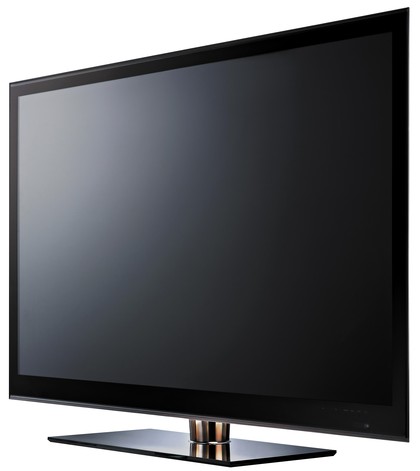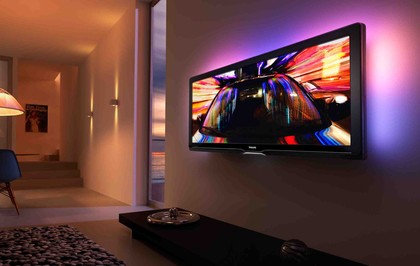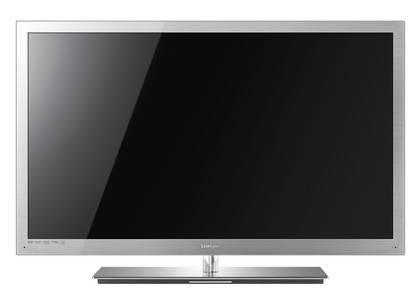LED TV: what you need to know
LED vs LCD TV: what's the difference?

SLIM SET: LG's LEX9 'NANO Full LED' breaks the mould by combining local dimming and a 8mm depth. It goes on sale next Spring
Many manufacturers use both Edge and Direct LED systems for LCD TVs. "LED edge-lit backlighting produces excellent picture quality with high contrast ratios of 500,000:1 or more," says Tom Henderson, Trade Marketing Manager, Philips TV.
"The technology also allows exceptionally thin sets to be designed and produced. Edge-lit sets also have an obvious cost benefit over direct, local dimming versions.
"However, direct, local-dimming LED back-lighting means TVs produce best in class picture quality, with exceptional contrast of 10,000,000:1, new levels of peak light output and, partly thanks to the ability to have a scanning implementation, superb motion reproduction."
Henderson also points out that both LED-backlighting systems dramatically reduce power consumption by over 40 per cent compared to conventional CCFL LCD TVs.
Differentiating LED from LCD
Either way, manufacturers - and that certainly includes Samsung - are marketing the new technology simply as 'LED' without pointing-out that it's simply an update to existing LCD panels.
Get daily insight, inspiration and deals in your inbox
Sign up for breaking news, reviews, opinion, top tech deals, and more.
"For Samsung it is important that LED is differentiated from LCD," said the spokesperson. "Whilst the key part of the technology (the panel) is the same, the backlight is obviously entirely different and manifests a greatly superior picture when compared to CCFL-backlit LCDs.
"Samsung invests a vast amount of engineering and R&D into LED technology, which is why it is treated as a premium product above LCD - and why they are positioned separately."

PICTURE PERFECT: Philips has just released a new version of its super-wide Cinema 21:9 screen with all-new LED backlighting
Henderson at Philips thinks the industry should be completely clear about what an 'LED TV' really is. "As an industry we need to take ensure that the benefits are clearly explained and communicated, particularly at point of sale," he says. "Consumers need to understand that the benefit of LED applies to LCD TVs."
Manufacturers love LED tech because it commands a premium; the sale of flatpanel TVs has long been a commodity market with tiny - and shrinking - profit margins and prices; analysts at DisplaySearch report that the average worldwide price of a LCD TV have fallen by 24 per cent since 2008.

INTO EDGE: Samsung's high-end LED9000 series shows the brand's commitment to Edge LED tech
Samsung and Sharp - two of the planet's biggest manufacturers of LCD panels - are aiming to ship more LED-backlit panels than traditional CCFL models.
The market is shared principally by four companies, with Samsung and Sharp each with 29 per cent, LG on 25 per cent and Chinese company AUO taking 13 per cent.
Cheap LED TVs
LED-backlit LCD TVs premium prices are quickly shrinking. "LED panel prices are falling even faster than CCFL," says David Hsieh, Large-Area LCD Research Team Leader at DisplaySearch. "Panel makers are expecting to grow their shipments through the end of the year as LED panel prices and end-market retailer prices of LED LCD TVs fall rapidly."
With LED prices crashing, there doesn't seem much point buying a traditional LCD TV without LED backlighting of some kind, but which type should you head for - Edge or Direct?
Henderson sums it up nicely for us, saying: "If you want an exceptionally slim TV with excellent picture quality, contrast and power consumption, then buy a LED Edge lit set. If you want a slim TV with exceptional all-round performance, go for a direct, local dimming set."
Jamie is a freelance tech, travel and space journalist based in the UK. He’s been writing regularly for Techradar since it was launched in 2008 and also writes regularly for Forbes, The Telegraph, the South China Morning Post, Sky & Telescope and the Sky At Night magazine as well as other Future titles T3, Digital Camera World, All About Space and Space.com. He also edits two of his own websites, TravGear.com and WhenIsTheNextEclipse.com that reflect his obsession with travel gear and solar eclipse travel. He is the author of A Stargazing Program For Beginners (Springer, 2015),
